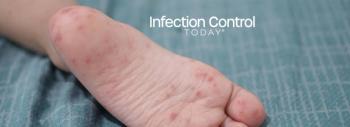
FDA Authorization: Raising the Bar for UVC Disinfection in Health Care
As hospitals turn to UVC technology to combat health care-associated infections, a new FDA mandate is changing the game—requiring formal authorization for devices that claim to reduce microbial contamination. For infection preventionists and health care leaders, understanding this regulatory shift is now essential to protecting patients and ensuring compliance.
The infection prevention field reached a milestone when Surfacide’s Helios Plus system became the first whole-room microbial reduction device to receive clearance from the US Food and Drug Administration (FDA) under 510(k). This landmark approval not only validates the technology but also elevates environmental hygiene as a vital pillar of patient safety by officially placing UVC microbial reduction devices under its regulatory authority. Surfacide founder and CEO Gunnar Lyslo joined Infection Control Today® to discuss what this means for the health care industry and why it is time to separate science-backed solutions from misleading claims.
Here is the interview in its entirety.
According to Lyslo, the FDA clearance marks a pivotal moment for the infection prevention community. “It establishes the critical role that health care surfaces play in patient safety,” he said, adding that no other tool in the environmental services toolkit has required FDA clearance—until now. The move underscores the seriousness with which the FDA views UVC disinfection technology. It also sends a clear message: Claims about efficacy and safety in health care environments must be backed by rigorous scientific evidence, not just marketing.
The path to FDA 510(k) clearance was neither short nor easy. UVC products were on the market for years before the FDA intervened. Initially, companies could sell UVC devices during the COVID-19 public health emergency if they held safety data on file and met criteria for low-level disinfection. Post-pandemic, however, the rules changed. All manufacturers now must submit efficacy and safety data for FDA review before selling their products.
In a unique regulatory twist, no existing category previously covered UVC whole-room disinfection systems, so the FDA required a “de novo” submission—essentially creating a new classification and predicate. Xenex's LightStrike+ was the first system to meet this new standard. Xenex achieved a de novo authorization (first to establish the classification), and Surfacide came next with its 510K.
Lyslo emphasized that this shift is more than regulatory housekeeping—it’s about protecting patients. Many UVC manufacturers continue to promote devices without FDA clearance, often using peer-reviewed studies as stand-ins for regulatory approval. But Lyslo is clear: scientific papers aren’t enough. Only FDA-reviewed data that demonstrate efficacy under worst-case conditions—specific distances, h8s, angles, and dose requirements—are valid for clearance.
This misalignment has led to confusion among health care decision-makers. Lyslo advised that any UV disinfection vendor should be asked a simple question: “Are you FDA authorized?” If they can’t provide documentation, the conversation should end.
As the FDA begins enforcing its new classification, the landscape of UVC disinfection in health care is poised to shift dramatically. “We fully expect the FDA to begin enforcement,” Lyslo said, noting that currently only 2 companies are authorized to sell UVC systems to U.S. health care institutions.
Despite the competitive advantage, Lyslo encourages other companies to follow Surfacide’s lead. “It levels the playing field,” he said. “If you’re making claims about microbial reduction, submit your data to the FDA and let them evaluate it.”
Ultimately, Lyslo believes that the FDA’s involvement is beneficial for the field. “This elevates the work we do in infection prevention,” he said. “And that benefits everyone, especially the patients we’re here to protect.”
Newsletter
Stay prepared and protected with Infection Control Today's newsletter, delivering essential updates, best practices, and expert insights for infection preventionists.






